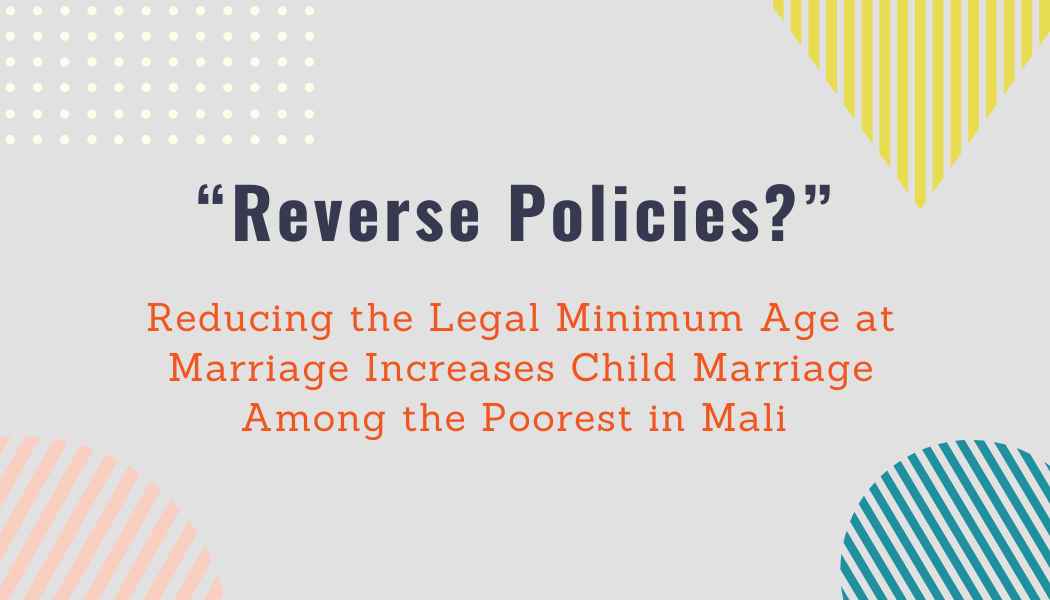
Commons Link
“Reverse Policies?” Reducing the Legal Minimum Age at Marriage Increases Child Marriage Among the Poorest in Mali
Working Paper Number
2022-89
Publication Year
2022
Paper Abstract
Child marriage is associated with adverse outcomes related to women’s wellbeing. To curb child marriage, many countries introduced laws that ban child marriage, and a growing number of studies evaluated their impact. Scant research focused on instances where countries lowered the legal minimum age at marriage, even though such “reverse policies” could result in stalled progress in eradicating child marriage, thus threatening the achievement of the Sustainable Development Goals. Using visualization techniques, regression analysis and a series of robustness checks, we document changes in the prevalence of child marriage in Mali where, with the introduction of the Family Code in 2011, the minimum age at marriage of 18 was lowered to 16 years. Following 2011, the prevalence of child marriage has been progressively increasing among women with no education or living in communities characterized by low local development: while child marriage prevalence was 59% for the last cohort of women who were subject to the minimum age at marriage of 18, it increased to 79% among the youngest cohort of women who were legally allowed to marry at age 16. Repealing existing provisions that aim to protect girls can have adverse consequences on the most vulnerable strata of society and can contribute to increasing socioeconomic inequalities in child marriage even further.